Pointe du Hoc
Pointe du Hoc is a clifftop location that lies between Omaha and Utah Beaches. The Germans fortified the area with six 155mm artillery emplacements. These big guns would enable artillery fire to be aimed at both beaches which would have definitely caused massive casualties in the American landing forces. The plan was for the U.S. Army Rangers to land at the foot of the 100-foot cliffs before the main invasion, climb up by ropes, take out the artillery and secure the area.
Just one problem: the landings were off target and that made the Rangers about forty minutes late. However, they hurried to the right point and managed to get the job done. Then, they had to hold the high ground and that meant defending against at least five German attacks until replacements came from Omaha Beach. Those two days were costly: out of the more than 225 Rangers who landed, only ninety were still able to fight by the time replacements arrived. Over eighty were killed in action.
For a detailed account of the assault on Point du Hoc and the ensuing battle, click here.
Just one problem: the landings were off target and that made the Rangers about forty minutes late. However, they hurried to the right point and managed to get the job done. Then, they had to hold the high ground and that meant defending against at least five German attacks until replacements came from Omaha Beach. Those two days were costly: out of the more than 225 Rangers who landed, only ninety were still able to fight by the time replacements arrived. Over eighty were killed in action.
For a detailed account of the assault on Point du Hoc and the ensuing battle, click here.
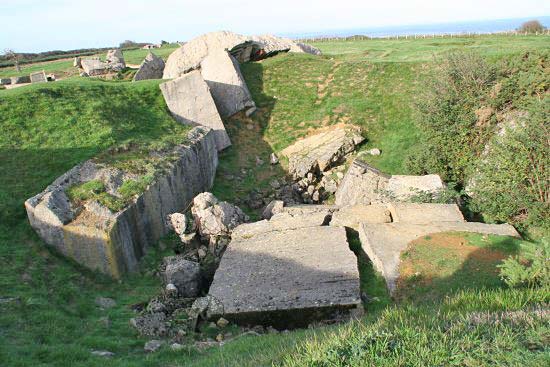
For at least a month before D-Day, Allied forces bombed Pointe du Hoc, attempting to destroy the emplacements. The fortification was too strong, though, requiring an attack by ground forces. These are just a few of the huge craters that still remain from the pre-invasion bombing.

This view is from the top of one part of Pointe du Hoc. This perspective certainly doesn't show how high it really is: a little over 100 feet. The beach is rocky and very narrow so the Rangers had to scale the cliff - or die on the beach. Those were the only two choices.

To present another perspective, here is a public domain military photo taken as the Rangers moved up the cliffs at Pointe du Hoc on June 6, 1944. Click here to see more military photos of the Rangers in action as well as other D-Day locations.
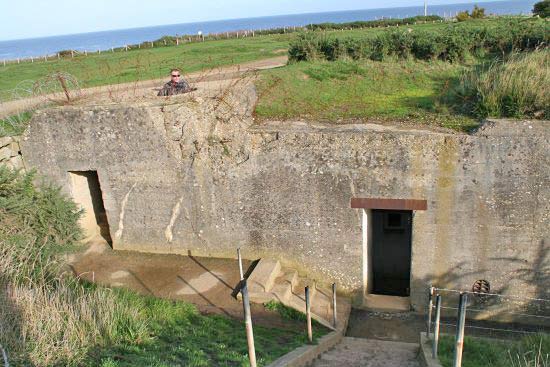
Callan went into this German emplacement and then climbed up to get a view of the area.

This might be a fun visit, but we agreed we wouldn't want to spend much time in a German bunker. In the background, you can see the Ranger Monument on the beach.

This simple stone monument pays tribute to the Army Rangers who took out the big guns and helped provide vital protection for the landing forces on Omaha and Utah Beaches. By the way, D-Day gave the Rangers their motto. While the invasion on Omaha Beach was underway, General Norman Cota asked a commander, "What outfit is this?" Someone yelled, "5th Rangers!" Cota replied, "Well, Goddamn it then, Rangers, lead the way!" From that, the Ranger motto was born: Rangers lead the way!

France gave the land at Pointe du Hoc to the United States so it could be developed and made safer for the thousands of visitors that come each year. The U.S., however, failed to spend one dime on the project so the French people donated enough money to put in safe walkways, a parking lot, small visitor center, restrooms and landscaping. The European Union also made a contribution.
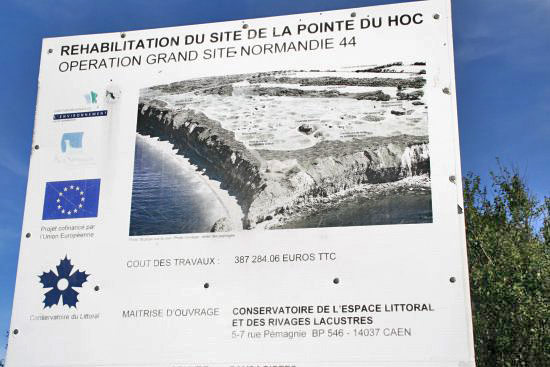
The Pointe du Hoc renovation project is not complete and the French are raising more money. Another 387,000 Euros are needed. That translates into about $496,000.
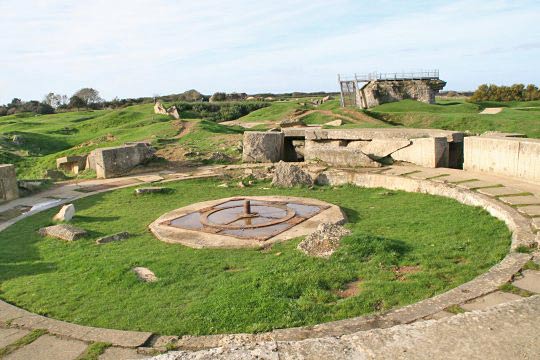
The remnants of war remain. The grass is green and some of the craters have filled in a bit. We can only imagine what it must have looked like then ... charred black, with smoke and dirt billowing upward.
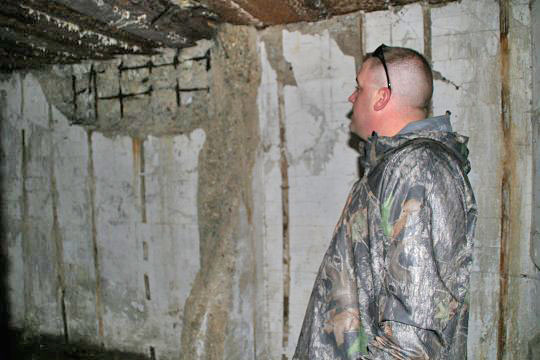
Imagine soldiers on guard - or fighting - in here! Once you walk inside one of the bunkers, you get a sense of impending doom. Every sound is magnified so the shelling must have felt like the world was caving in.
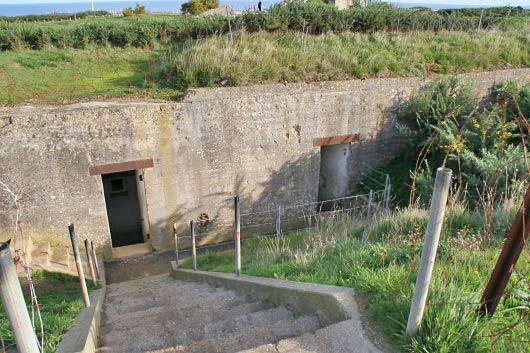
While many of the coastal batteries were built in a relatively short period of time, the structures were very detailed ... steps, doors, observation holes, and railings. Along with the 155mm guns at Pointe du Hoc, there were underground ammunition stores and barracks needed to house the 200 men who were ordered to defend the coastline.